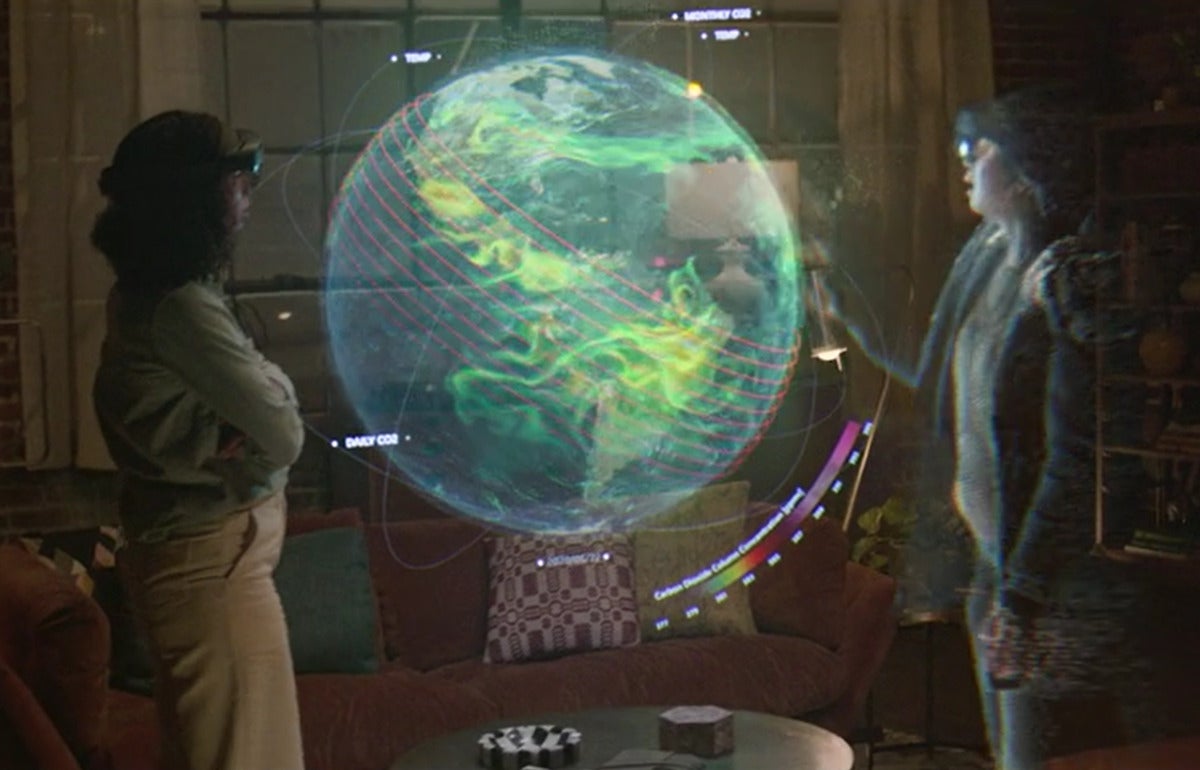Microsoft offered a glimpse of what it believes will be the future of remote collaboration at Ignite on Tuesday, with workers one day able to interact with holographic items and talk to photo-realistic, life-like “holoportation” avatars of their colleagues.
The vision is based on the potential of Microsoft Mesh, a new Azure-based developer SDK that enables the creation of collaborative mixed-reality apps that can be used across multiple devices.
Microsoft hopes that Mesh will boost the ecosystem of mixed-reality development, abstracting some of the technical problems involved in the creation of virtual environments. Collaborative apps can then be delivered across any platform, whether it be Microsoft’s own $3,500 HoloLens 2 headsets or those from competitors such as Oculus, as well as on regular laptops or smartphones.
Speaking during the company's Ignite event this week, Microsoft CEO Satya Nadella compared Mesh to “what Xbox Live did for gaming.
“We went from single player to multiple player, creating communities that helped people connect and achieve together,” he said. “Now, just imagine if the same thing happened with mixed reality. Mesh enables you to interact holographically with others with true presence in a natural way.”
The prospect of workers attending team meetings via 3D photo-realistic “holoportation” is still at the concept stage, and is not publicly available. What is ready for use is a Mesh app for HoloLens. This allows multiple colleagues to join remote collaboration “spaces” using Microsoft’s headset with more simplistic, animated avatars representing meeting participants. Users can then annotate, draw and import 2D and 3D content from OneDrive into the shared virtual environment.
As with all Mesh-based apps, it integrates with Azure Active Directory and Microsoft Account MSA identity services for user authentication, and information is encrypted.
The Mesh app for HoloLens 2 is available now in public preview.
In addition, Microsoft promises a Mesh-based version of AltspaceVR, the social VR platform acquired by the company in 2017. This will offer “enterprise-ready collaborative events” in full VR, such as meetings, town halls and other gatherings, while those without VR headsets can join on their laptop or PC in 2D-mode.
Access to the app is available upon request.
Wayne Kurtzman, a research director at IDC, sees potential for Mesh to create new types of digital experiences for workers. “As teams become more geographically dispersed, AR/MR products like Microsoft Mesh will make meetings more interactive, add new forms of value, and provide new ways of truly connecting each other,” he said.
Microsoft is not the first to provide 3D virtual collaboration environments, with companies such as Spatial offering experiences similar to what can be done now with Mesh and HoloLens devices.
However, Microsoft could pave the way for wider use of virtual environments for collaboration, said Anshel Sag, an analyst at Moor Insights & Strategy, by building on early interest in the technology for connecting workers.
Microsoft said more apps are on the way, whether developed in-house — Teams and Dynamics365 are cited as candidates — or from third-party developers.
“Mesh is without a doubt a future-looking peek at meetings and remote collaboration, but as more of the leading tech companies embrace spatial computing, we will see an increased uptake of XR [extended reality] for work,” he said.
 Microsoft
Microsoft
An overview of the Microsoft Mesh platform architecture.
Going forward, Sag sees the potential of other new ways of interacting with Microsoft’s portfolio of productivity products.
“Nobody wants to build a collaboration tool within their own apps from scratch and I would really like to see Microsoft leveraging Mesh inside of its own productivity apps as a way to show the best practices and implementations of the platform's capabilities,” said Sag.
Such tools would need to improve on the 2D experiences currently available, he said. “For example, I would love to see someone presenting their slides in person in XR rather than just talking through them one by one and hitting the slide advance button,” he said.
“We know that Microsoft is starting with AltspaceVR, but I believe the potential is quite great when you consider the breadth of Microsoft.”






